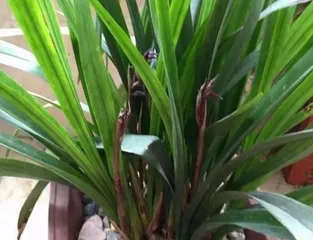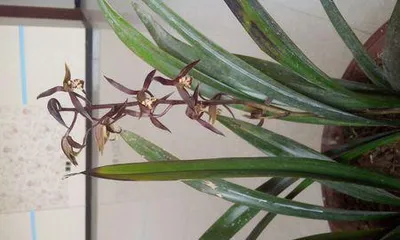Cymbidium is a common ornamental plant, and many people like to grow it at home or in the office to bring a fresh and natural feeling to their lives. However, some friends have reported that their Cymbidium has developed yellowing leaves. Yellowing leaves are a common problem in the plant growth process, but if not resolved in time, it may affect the health and growth of the Cymbidium. This article will address the problem of yellowing Cymbidium leaves, providing a detailed introduction from aspects of care techniques and common disease diagnosis to help everyone solve this problem.

Suitable Temperature
Cymbidium is a plant that prefers a warm environment, with a suitable growth temperature between 20°C-25°C, not lower than 15°C. If the temperature is too low or too high, it will lead to poor plant growth and problems such as yellowing leaves.
Appropriate Fertilization
Cymbidium has a long growth period and needs appropriate fertilization to maintain plant growth. However, excessive fertilization will lead to high salt content in the soil, causing yellowing leaves. When fertilizing, it is necessary to pay attention to the amount and frequency to avoid this problem.

Suitable Light
Cymbidium needs sufficient light for photosynthesis to promote plant growth. However, if the light is too strong or too weak, it will cause problems such as yellowing leaves. In the process of care, it is necessary to pay attention to providing suitable light conditions for the Cymbidium.
Keep the Soil Moist
Cymbidium needs to maintain a moist soil environment for normal growth. If the soil is too dry or too wet, it will adversely affect the plant's growth, leading to problems such as yellowing leaves. In the process of care, it is necessary to pay attention to maintaining the moisture level of the soil.
Prevent Overwatering
Although Cymbidium needs to maintain a moist soil environment, overwatering will also affect the plant's growth, causing problems such as yellowing leaves. In the process of care, it is necessary to pay attention to reasonably controlling the frequency and amount of watering.

Timely Removal of Withered Leaves
The old leaves of Cymbidium will gradually turn yellow and need to be removed in time to facilitate the normal growth of the plant. If not cleaned up in time, it will affect the plant's nutrient supply, leading to problems such as yellowing leaves.
Prevent Disease Infestation
Cymbidium is susceptible to diseases such as rot and powdery mildew. These diseases can cause poor plant growth and even death. In the process of care, it is necessary to prevent disease infestation and take timely measures for treatment.
Pay Attention to Proper Pruning
Overly long or dense branches of Cymbidium will also affect the normal growth of the plant. In the process of care, it is necessary to prune appropriately to maintain the beautiful shape of the plant and promote healthy growth.
Suitable Time for Repotting
The roots of Cymbidium cannot tolerate long-term growth in the same soil, so it is necessary to replace the pot soil regularly. However, the time for repotting should not be too frequent to avoid adverse effects on the plant. In the process of care, it is necessary to choose a suitable time for repotting according to the actual situation.
Timely Pest Control
Cymbidium is susceptible to pests such as aphids and termites. These pests will cause the plant's leaves to turn yellow and hinder growth. In the process of care, it is necessary to prevent and control pests and take timely measures for treatment.
Provide Suitable Humidity
Cymbidium needs a suitable humidity environment for normal growth. If the ambient humidity is too low or too high, it will adversely affect the plant's growth, leading to problems such as yellowing leaves. In the process of care, it is necessary to pay attention to providing a suitable humidity environment.
Timely Application of Nutrients
Cymbidium has a long growth period and needs timely application of nutrients to maintain normal growth. However, the type and amount of nutrients need to be selected and controlled according to the actual situation. In the process of care, it is necessary to pay attention to the rational use of nutrients.
Pay Attention to Temperature Changes
Cymbidium is not tolerant of sudden temperature changes and needs to maintain the stability of the temperature. If the ambient temperature changes, it will cause problems such as yellowing leaves. In the process of care, it is necessary to pay attention to maintaining the stability of the ambient temperature.
Timely Pruning
The overly lush growth of Cymbidium branches will also affect the normal growth of the plant, so it is necessary to prune in a timely manner. However, the time and method of pruning need to be selected and controlled according to the actual situation. In the process of care, it is necessary to pay attention to timely pruning.
Yellowing leaves on Cymbidium is a common problem, but as long as you master the appropriate care techniques and common disease diagnosis methods, you can easily solve this problem. It should be noted that different Cymbidium varieties and growth environments will affect the care, so it is necessary to be flexible and adjust according to the actual situation during the care process. I hope this article can help everyone solve the problem of yellowing Cymbidium leaves.